The Green Londoner was at the preview of the Design Museum’s new flagship exhibition More than Human yesterday. It’s beautiful, striking, deep and innovative — and we’re here to tell you all about it.
What if design wasn’t just about helping humans, but about supporting all life on Earth?
That’s the central idea behind More than Human, a bold new exhibition opening to the public at the Design Museum on 11 July. Co-curated by Justin McGuirk (Director of Future Observatory) and Rebecca Lewin (Head of Curatorial Programme), the exhibition asks visitors to rethink who and what design is really for.

“This isn’t just another show about ‘sustainable design’,” says Justin McGuirk.
“It’s a radical rethink of design’s role in the world. Many of the works are still experimental, but they show a clear shift in thinking — design isn’t just about human needs anymore, but about helping the living systems we all depend on. More than Human is what design needs to become in the 21st century.”
Backed by Future Observatory, the Design Museum’s national research programme for a green transition, the exhibition is more than just a display — it’s a launchpad for change. It reflects both how design can evolve and how the museum itself is changing to meet today’s environmental challenges.
Being Landscape: We Are Not Separate
The exhibition is structured around three main sections, beginning with a challenge to the idea that we are separate from nature. In Being Landscape, visitors are invited to see themselves as part of the natural world — deeply connected to landscapes, ecosystems, and the climate.
One highlight is an 8-metre mural by MOTH (More Than Human Life Project). It’s visually stunning and invites you to explore the deep interconnections between rivers, plants, and animals — and to think about what it would mean to give these systems legal rights.
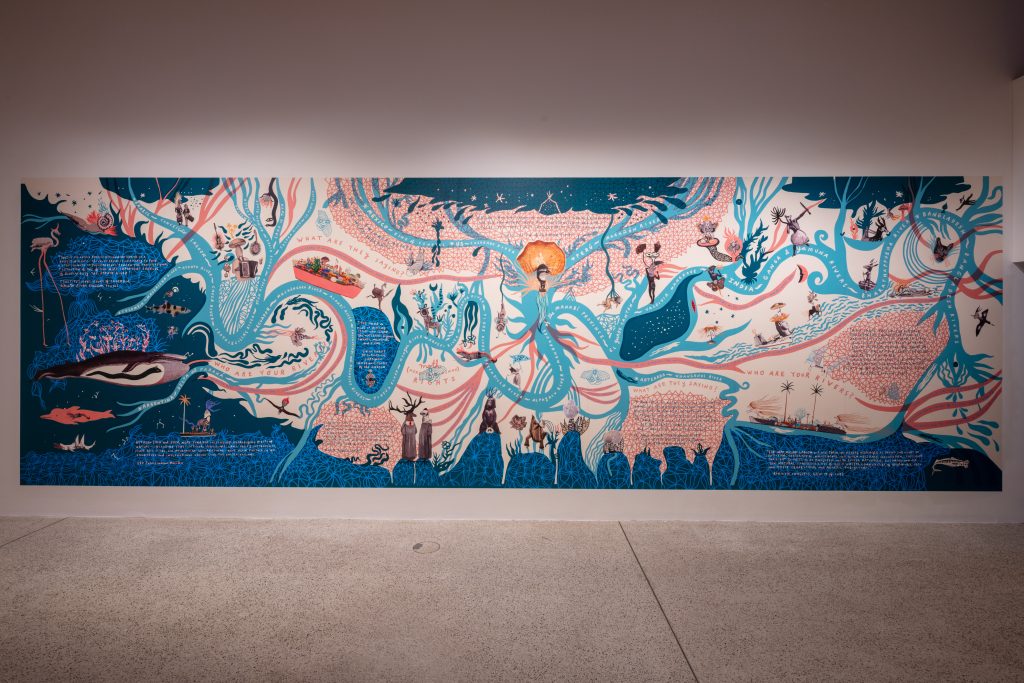
Another brilliant piece is The Nature Calendar by Marcus Coates. It reminds us that, alongside our human routines, non-human species follow their own seasonal rhythms.
Making the World: Designing for All Life
So, if we’re part of nature, how should we design?
Making the World showcases ideas and projects that support all living things — not just people. From biodegradable materials and regenerative architecture to creative ideas like a “city of birds”, this section looks at how we can shape a world where all life can thrive.
It’s not just about innovation — it’s also about responsibility. Can design help repair the damage it has caused? Can it support ecosystems? One exhibit features a chair designed not for humans but for insects by Marlene Huissoud. A small act, but a powerful statement.
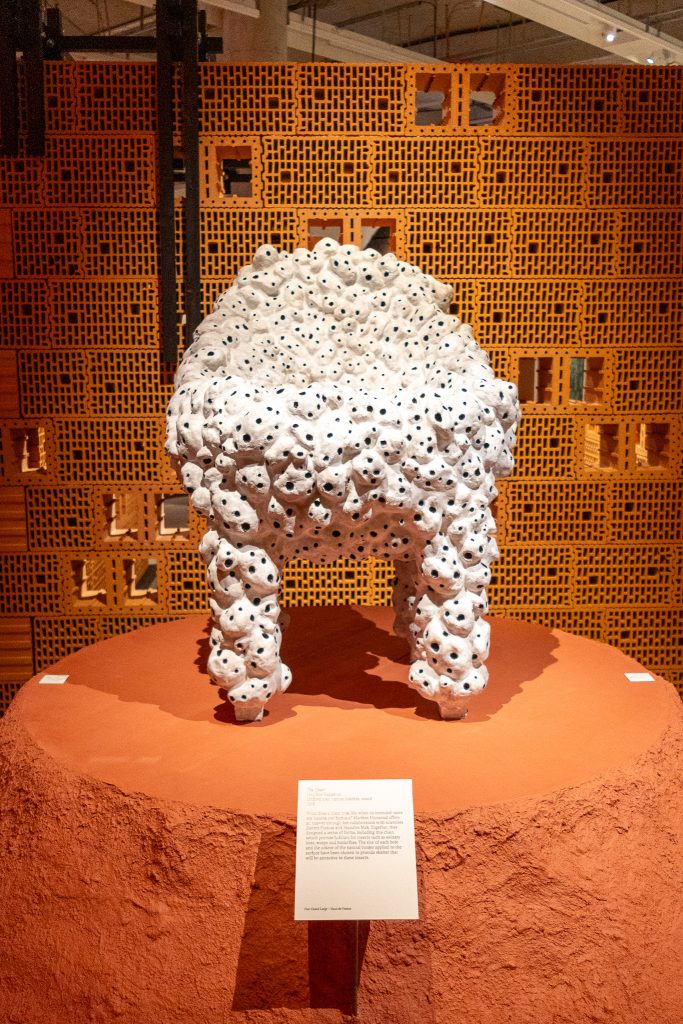
Suomi/Koivisto Architects present the Alusta Pavilion, made from unfired, mass-produced insulation bricks, creating a form that offers shelter for both humans and pollinators. It’s designed as a place for multispecies encounters in urban spaces.
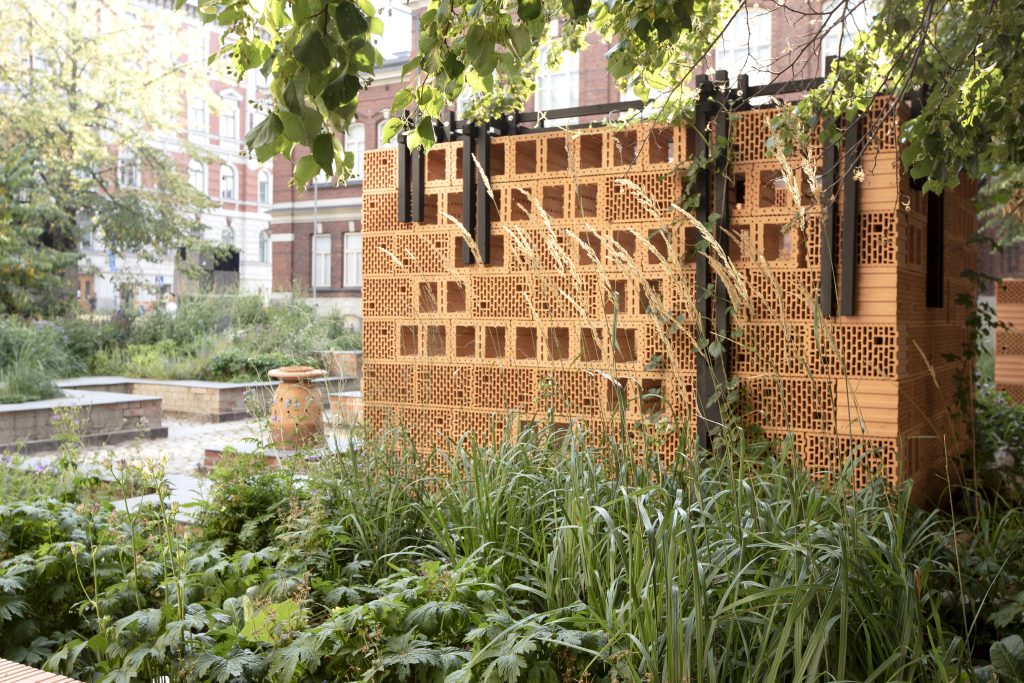
Johanna Seelemann also contributes with vessels from her Oase series — terracotta containers designed to improve conditions for urban trees, shaped to resemble car fuel tanks.
Shifting Perspective: Seeing Through Non-Human Eyes
The final part of the exhibition dares us to go one step further: what if we could see the world from the perspective of other species?
Of course, none of us know what it feels like to be a bee or an octopus — but trying to imagine it pushes us beyond a human-centred way of thinking. This section features unusual shapes, living materials, and artworks that expand our imagination.
One standout piece is The Kelp Council by Julia Lohmann — a beautiful, tent-like meeting space made of seaweed. What if the kelp could gather and decide how to protect their ocean?
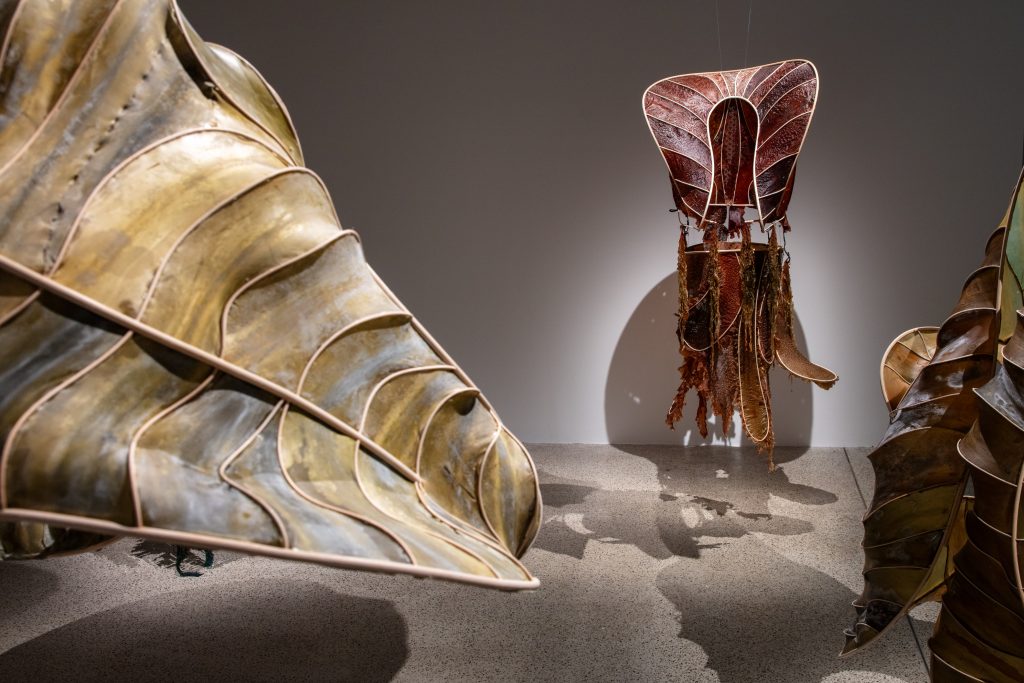
It’s not just about empathy — it’s about opening up new ways of thinking and designing.
A Living, Breathing Exhibition
More than Human is inspiring, visually rich, and full of ideas we urgently need. It’s about changing the forms, materials, and goals of design — and about shifting its purpose entirely.
This exhibition isn’t just full of clever ideas — it points us in a whole new direction.
It invites us to rethink how we live and design — not just for us, but for all life on Earth. It also breaks down silos between design, climate, art, culture, and innovation — making space for fresh thinking where it’s most needed.
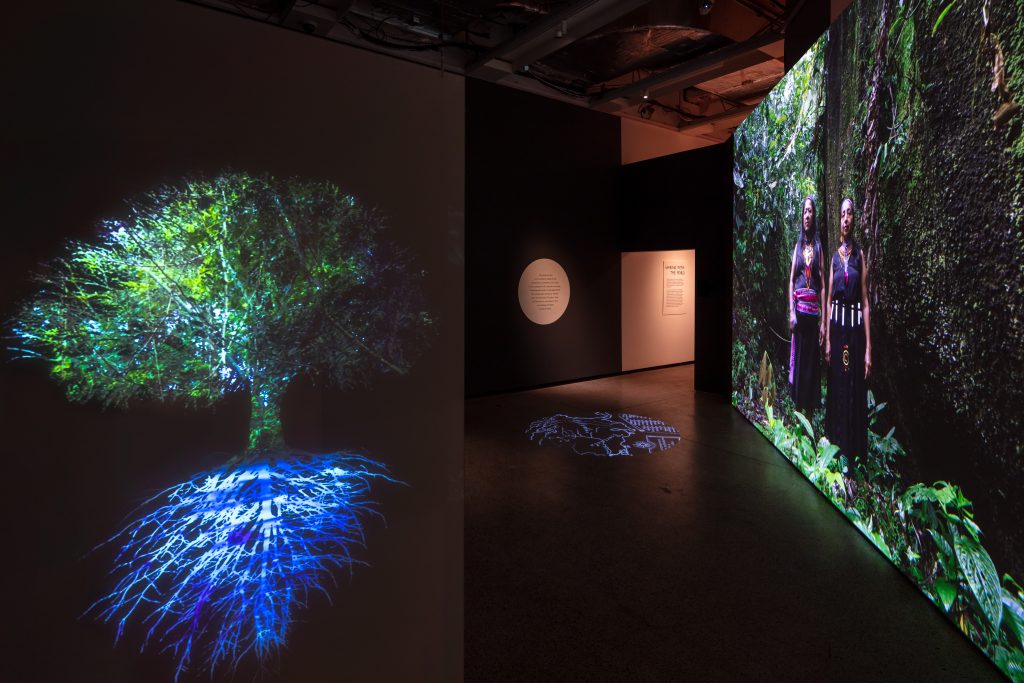
Bonus Facts
- 140 artworks across traditional and contemporary practices
- 50 renowned contributors: artists, designers, architects, performers
- 4 new commissions supported by Future Observatory
- Alexandra Daisy Ginsberg’s stunning tapestry reimagines (featured photo – by Luke Hayes) the world from a pollinator’s perspective
Green Parakeet’s Tips
- The show is packed with ideas but easy to explore in under 90 minutes
- Perfect for adults, but also enjoyable for kids thanks to colour, movement, and interactive videos
- The Design Museum’s exhibition shop may be small, but it’s packed with beautifully designed, sustainable objects, books, and gifts — we might go back just for that!
- Don’t miss Pollinator Pathmaker DIY, a tool to design your garden for bees and butterflies
- Outside in the museum’s garden: 16 birdhouses and 1 birdbath created by London-based designers as part of Dwellings Rehomed
Exhibition Info
🗓️ More than Human
📍 Design Museum, London
📅 11 July – 5 October 2025







